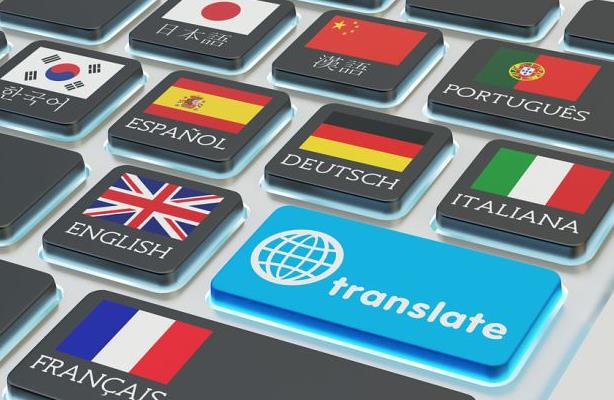A perfect translation should be your primary focus. Let’s check the top suggestions to improve your translations, based on Google’s principles.
A perfect translation and quality content should be your primary focus, especially when satisfying the needs of your customers or followers. Additionally, as Google’s search algorithms are becoming smarter and the quality of the content plays an important role in ranking pages in search results, you should focus on organic quality text and translation.
To follow some rules to improve your translation writing based on the principles by which Google determines the quality of page content and regarding some translating tips from experts, let’s check the top suggestions. Here are the main points that you should definitely pay attention to!
1. Get the Grammar Apps and Tools
Whenever you start editing or writing translation, make sure that you have apps, checkers and tools that help to see typos and grammar mistakes. You just need to select the document, set the language in which you are translating and make sure that you have spelling/grammar apps installed. Of course, such tools do not solve all the problems but significantly helps in the work.
2. Apply to the Common Practices
Various languages offer their own rules and practices when translating text or correcting punctuation, which you actually have to follow. Professionals apply such common practices and rules every day and adhere to the standards. In English, for example, the names of foreign languages are capitalized, however, in Spanish such rule is not applied in grammar. So proofreaders and typesetters try to follow common practices and rules, be attentive to language particular features while translating the text.
3. Follow the Rule: The Winner Is the Original Language
Do not allow the difference between the languages to ruin your translating work. What doe sit mean? When translating the text, languages are in a kind of confrontation, creating continuous tension. However, try to focus on the original text and keep translating the content without deviation.
4. Reread Text a Few Times
A great way to check your translation is to reread text a few times and also try to do it aloud. If you read sentences aloud, you can hear if the translation sounds harmonious and if it is clear to readers. Additionally, if you reread some fragments, it will turn out to be inappropriate for your editor.
5. Compare Both Texts
Try to enhance the quality by comparing two texts. Do not ignore the original text by avoiding important fragments when the language of the translation becomes the winner. As some experts say, avoid using “beautiful inaccuracy”. It means you can make a translation that sounds beautiful but does not completely match the primary context. It is an acceptable option to follow, but you should determine the proximity of the translation and compare the two texts at the end, making sure context is the same.
6. Check and Edit Your Own Work
Checked and re-edited text should have even better quality. If you are now sure, that you have time to translate, check or re-edit your text, you can discover this website and get professional help. So make the comparison of the texts and verification of accuracy. Then, reread the text of the translation to make sure that the material is translated correctly.
7. Pay Attention to the Root Words & ‘False Friends of the Translator’
If there are related words in two languages, you must already be familiar with the translator’s false friends. These are words that are very similar, but have different meanings, for example, the word “eventual”: it has one meaning in English, and completely different in Portuguese, and confuses many beginners who only dream of becoming successful translators.
8. Focus on Translation Accuracy & Literacy
Accuracy is a good quality for the translator, but we often try to find nouns and verbs that are more suitable in meaning and do not notice adjectives and adverbs that determine the accuracy of the text. Basically, adjectives and adverbs are words that set off other parts of speech, they are short and small, but they can precisely regulate the direction of our thoughts. Also, literacy help to make sense of the words, acquiring the right information.
9. Do not fall into the “trap of prepositions”
It is amazing how some translators still manage to get into the ‘trap of prepositions.’ Most prepositions always depend on a word: either a verb or a noun. Accordingly, translating prepositions separately does not make any sense. In cases where you are translating a verb or noun and don’t think about the preposition that should follow them in the original language, just use the preposition that is needed when translating.
10. SEO Advice: Check Headers and Be Unique
When translating, we usually immediately go to the main text and forget about the headings and footnotes, and it is precisely there that a lot of serious errors lie. If the original text, check to see if you forgot to translate the possible titles, labels on the graphic images and make sure that they are displayed in the document.
If all the content on a page is made up of pieces of text that were completely copied from other sources, even if it is translated text, or slightly paraphrased using synonyms or rearranging words in sentences, this is a direct sign of poor quality for Google. So try to quote someone else’s content, be sure to provide a link to the source. And in no case do not try to pass off other people’s content as your own.
Conclusion
Summing up the above information, try to run the spelling and grammar check when you finish the translation. Before sending the translation, read your text aloud to be sure it is harmonious. We often make mistakes when editing text, and the last chance to avoid them and re-check the work is to re-read the text. You can also ask someone to check your work. If you work for a translation agency, then the editor can review and verify the work. If you work for a specific customer, you can ask someone to read your translation. Even if you are a professional in your field, an extra check by an unbiased person will not hurt.
Discover our translation company.



